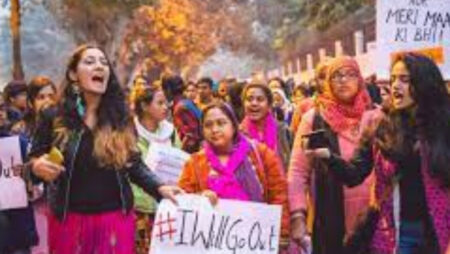Anjali Deswal and Vandna, two women in their 20s of the Surehti village of Jhajjar district of Haryana were killed by their parents on account of marrying a boy of another caste of the same village. The Indian Express dated 18 September 2024 shared a glimpse of what and when went down with the two girls, showing us the horrors that continue to plague the Indian society. Anjali and Vandna’s case is only one of many such cases.

Honor Overtakes Women‘s Life
Khap is a term derived from the Saka language word “Khatrap” which means an area inhabited by a particular clan. Some argue that Khaps do not possess a proper structure whereas others have defined the working of a Khap numerically and procedurally.
It is also noted that Khaps originally were not limited to the Jats or Haryana as a region in particular. They were also found in areas of Uttar Pradesh.
The role of these Khap Panchayats was to settle disputes, preserve religious norms and protect the land that they inhabit. The restrictions, however, imposed by these Panchayats, to limit their territorial and status boundaries became more restraining for the women.
Now, while the Khap Panchayats are regionally limited, cases of honor killing, more than often recorded as homicide or even unrecorded, take place throughout the country in different forms. Parents, on account of their “honor” in the society with the fear of ostracization, kill their children. They choose honor over blood. These Khaps exist in various forms accross the country, often without a definitive nomenclature but a clear stance towards honor preservation.
According to the National Crime Records Bureau Report of 2020, a total of 25 cases of honor killings were reported across the country. However, an NGO named Evidence claimed that in the same year, 195 instances of honor killings took place in Tamil Nadu alone. These discrepancies also highlight the unreliability of the available data on the same, with many of these atrocious acts likely going unreported.
In such a case, these “courts for preservation of society’s conscience” for the safety of social order threaten progress and vision of the Indian society.
Patriarchy Saves the Day but Not Women

The victims of these hard drawn boundaries are women. The caste system devised by the Brahmins is patriarchal in its very origin. It drew boundaries so rigid that mobility of any kind was obliterated. And women, they were made the bearers of the family and the society’s honor in turn making them susceptible to the violence inflicted by such traditional structures.
A woman’s ability to reproduce gives her the ability to blur caste boundaries and so, the need to preserve one’s societal identity results in the women being deprived of choice.
This patriarchy of the Indian society reproduces itself in various forms, caste, family and quasi- judicial structures to help preserve its position in the society and any one who attempts to challenge it, is stripped off of their right to exist, making a mark and emanating fear.
Traditions then aren’t fearful of love, they are fearful of the downfall of the patriarchal norms in the name of societal order. The then quasi-judicial character given to acts of “honor protection” and the safe haven given to such acts by the communities that help preserve their ideas facilitate the weakening of the threat to patriarchy.
The paranoia that comes with India’s progression within communities which have created a dominant position for themselves availing the resources of the caste structure then produces acts of aggression. The very people in the administration, other than a few exceptions, also find themselves under the deep spell of casteist ideas.
The Way Forward
The Constitution of India propagates equality, liberty, freedom and justice. These rights, when formulated, were done so with a vision of equal accessibility to all those who live in the Indian society. The Special Marriage Act, 1954 was passed to help realise this vision. However, the realisation will only come when the socialisation of the Indian people is modernised into universal ideas of liberty, equality and justice and thus, help attain a society which is secular and egalitarian in character.













